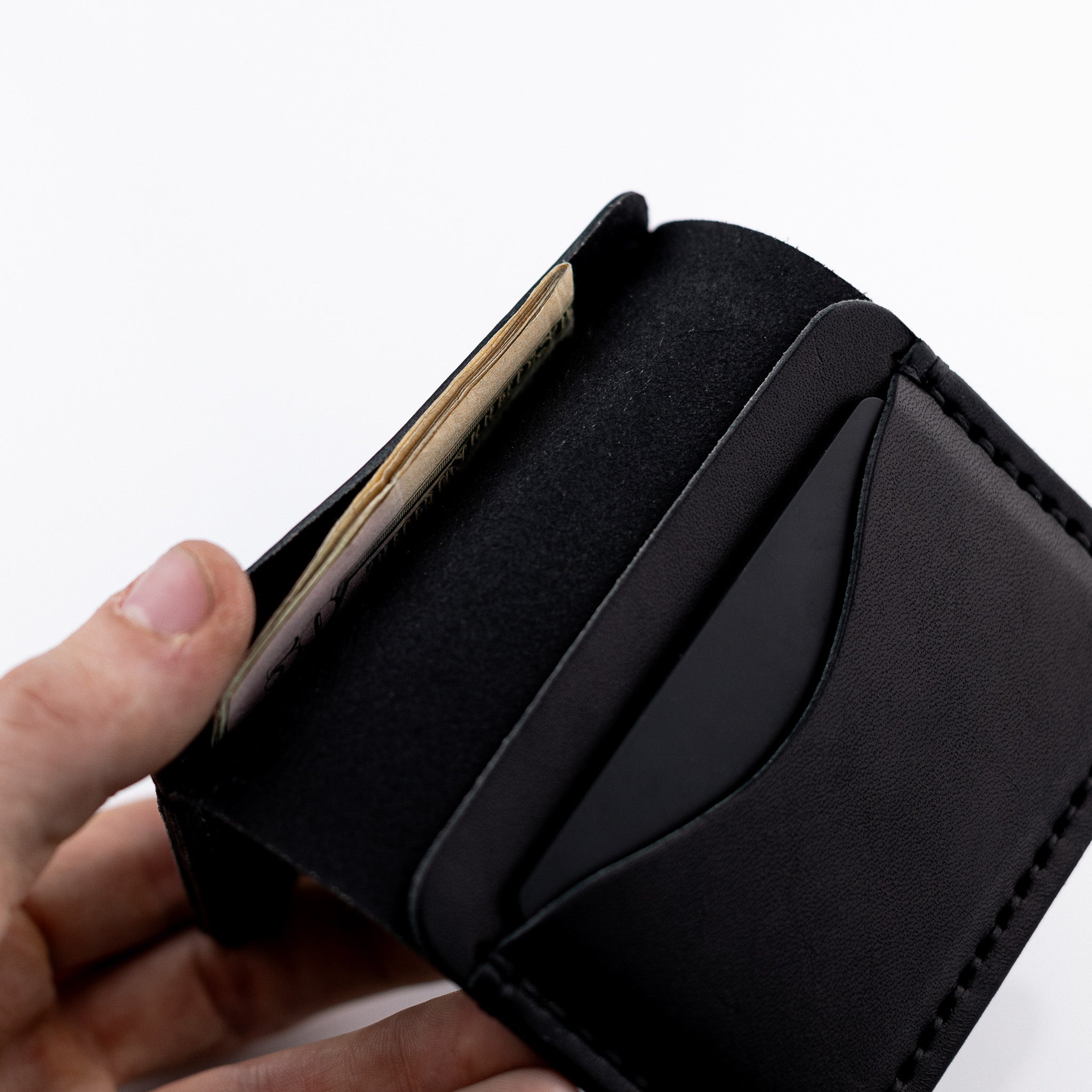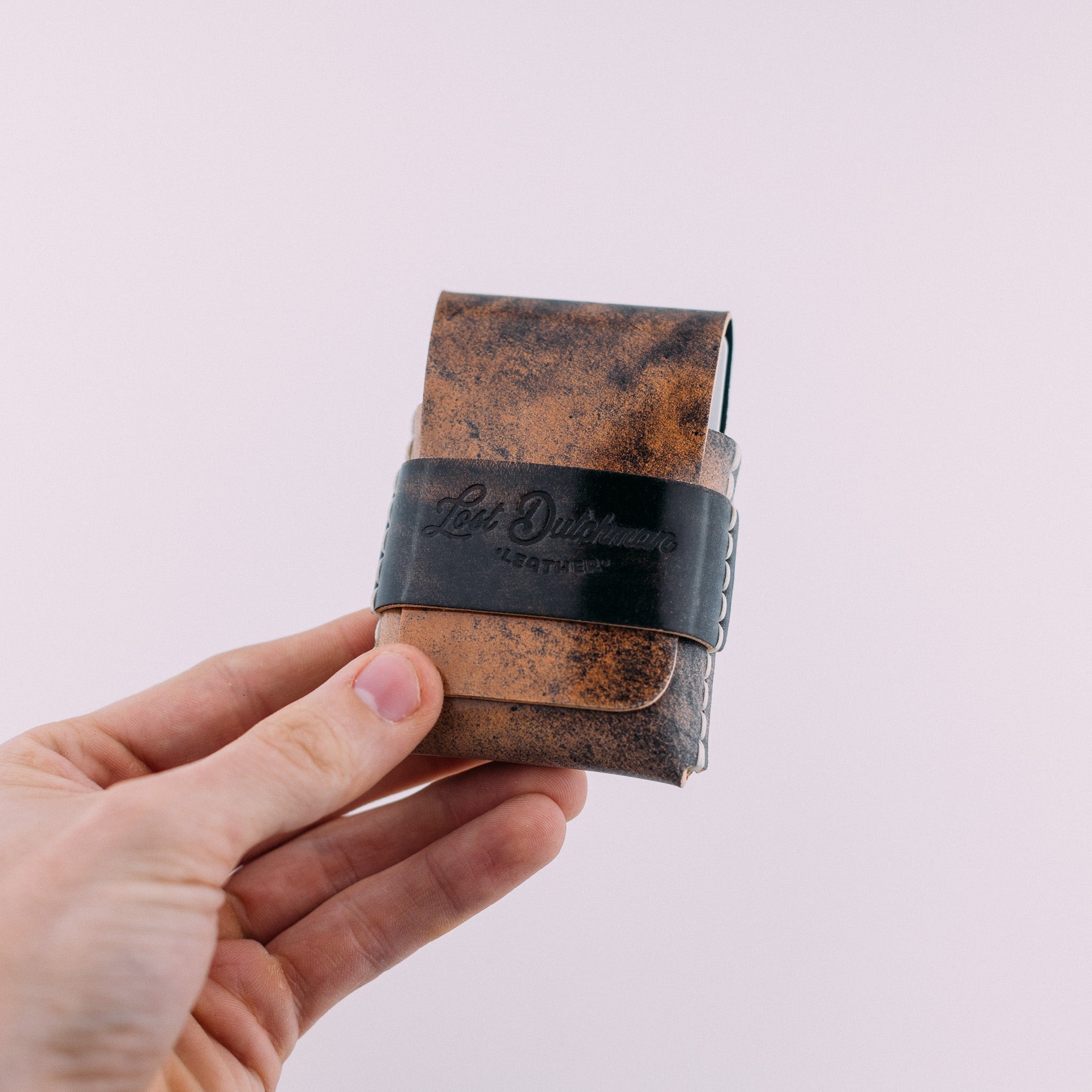
Identifying High-Quality Leather Goods
The first thing that strikes you about a well-made leather good isn’t always the look; it’s the feel. A certain weight in the hand, a warmth in the texture, and even the distinct aroma of real leather all combine to create an unmistakable sense of authenticity. That experience is worlds apart from the stiffness, chemical smell, and plastic-like touch of cheap, mass-produced imitations.
In a marketplace where every other tag boasts the word “genuine,” the skill of high-quality leather identification is more valuable than ever. It allows you to separate lasting craftsmanship from products built to disappoint. For anyone who values durability, heritage, and timeless style, learning how to spot fake leather is a must.
Step One: Understanding Leather Grades
Before you can evaluate a product, you need to understand the raw material itself. Leather is not a single, uniform substance. Its quality depends entirely on which part of the hide is used and how it’s treated.
Full-Grain Leather: The Gold Standard
-
Cut from the very top of the hide.
-
Retains all the natural grain, scars, and textures.
-
Strongest and most durable type of leather.
-
Develops a rich patina over time, becoming more beautiful with age.
-
Used in heirloom-quality pieces like The Dutchman Wallet and The Belt.
Top-Grain Leather: Smooth and Polished
-
Also from the top of the hide, but sanded or buffed to remove imperfections.
-
More uniform and refined in appearance.
-
Durable, but lacks the same patina potential as full-grain.
-
A good choice for sleek, polished goods.
Genuine Leather: The Misleading Label
-
Made from inner layers or scraps of hide.
-
Often processed, embossed, or coated to look better than it is.
-
Less durable, prone to peeling and cracking.
-
Marketed heavily, but usually signals a low-quality product.
Bonded Leather: Best to Avoid
-
Not true leather at all, made from shredded scraps and glue.
-
Cheap, weak, and quick to flake.
-
Short-lived, disposable, and not worth the investment.
Step Two: Visual Cues
Your eyes are the first tool in how to spot fake leather.
-
Imperfections = authenticity. Real full-grain leather will show subtle variations, tiny scars, wrinkles, or uneven texture. Perfect uniformity often signals a stamped pattern on lower-grade leather.
-
Color depth. High-quality leather absorbs dye, giving it a deep, rich tone. Cheap leather often has a painted-on surface that scratches easily.
-
Edges. Look at the cut. Full-grain pieces like our wallets reveal natural fibers, sometimes burnished for smoothness. Fake or low-grade leather edges look plasticky, rolled, or heavily painted.
A true full-grain piece, like The Dutchman Wallet, will display these natural characteristics openly; it doesn’t need to hide behind coatings.
Step Three: Touch and Flexibility
Leather should feel alive.
-
Supple yet firm. High-quality leather has strength without stiffness. Fake or bonded leather often feels rigid or unnaturally soft, almost like vinyl.
-
Natural creasing. When bent, good leather creases in a way that matches its grain. Imitations may wrinkle sharply or show cracks immediately.
-
Surface feel. Authentic leather often has a slightly waxy or oily touch, while low-quality hides feel dry or plasticky.
Try flexing a belt. A full-grain piece will bend smoothly and return to form. A fake belt may warp, wrinkle, or even split at stress points.
Step Four: The Smell Test
Perhaps the most overlooked but most reliable test: smell.
-
Real leather aroma: Earthy, warm, and organic. It’s subtle but unmistakable.
-
Fake or bonded leather: Strong chemical or plastic smell, sometimes masked with perfumes.
When you open the box on a Franklin Wallet, that authentic aroma is part of the experience. It tells you instantly you’re holding the real thing.
Step Five: Craftsmanship and Construction
The material matters, but so does the maker.
Edges
-
High-quality goods: Burnished, hand-rolled, or neatly painted. Smooth to the touch, sealed against wear.
-
Cheap goods: Ragged cuts, exposed fibers, or sloppily glued finishes.
Stitching
-
High-quality goods: Tight, even, consistent stitching. Often with waxed thread for durability. Hand-stitching, like the saddle stitch, is the strongest of all.
-
Cheap goods: Loose threads, uneven lines, or machine stitches that unravel easily.
Our wallets collection showcases this difference. Each stitch is deliberate, ensuring years of use without splitting.
Step Six: Understanding Price and Value
Quality comes with cost.
A belt that costs $15 is almost never made of full-grain leather. The sourcing, tanning, and craftsmanship required simply cannot be achieved at that price point. While expensive doesn’t always mean quality, suspiciously cheap usually signals shortcuts.
Think of it this way: buying a $20 bonded leather belt every year for a decade costs $200. Buying one full-grain Lost Dutchman Belt for $120 could last the same decade or more, and grow better with time.
Step Seven: Brand Transparency
Another essential element in high-quality leather identification is the reputation of the maker.
-
Trusted brands: Open about their materials, tanning methods, and sourcing. Proud to share their process.
-
Low-quality brands: Use vague terms like “genuine leather,” with little detail on tanning or construction.
At Lost Dutchman Leather, we take pride in transparency. Whether it’s a Catch-All Tray, AirTag Keyring, or Limited Leather Coasters, every piece reflects full-grain authenticity and traditional methods.
Step Eight: Decoding Leather Terminology
Labels can be deceptive. Learn the terms.
-
Vegetable-tanned leather: Uses natural tannins, takes longer to produce, results in leather that ages beautifully.
-
Chrome-tanned leather: Quick and inexpensive, versatile in color, but lacks the same long-term character.
Understanding tanning gives you context. A full-grain, vegetable-tanned wallet like The Dutchman is not just an accessory; it’s a companion designed to last decades.
Why Fake Leather Always Disappoints
Fake and low-grade leathers may look appealing at first glance, but they reveal themselves quickly. Cracks, peeling edges, chemical smells, and fading colors appear within months. They’re disposable by design.
Authentic leather, by contrast, rewards you. It softens, darkens, and becomes uniquely yours. It’s an accessory that tells a story, not just for today but for the years to come.
Final Thoughts: Building Your Leather Legacy
Learning how to spot fake leather isn’t about avoiding disappointment alone; it’s about building a collection that reflects your values. Each quality piece is an investment in durability, style, and authenticity.
From belts that hold up year after year, to wallets and card holders that grow richer with patina, to everyday essentials like trays and keyrings, Lost Dutchman Leather goods embody what high-quality leather should be.
If you ever have questions about identifying authentic leather or choosing the right product, our team is always ready to help through our Contact Us page.
Because true leather isn’t just worn, it’s lived.

